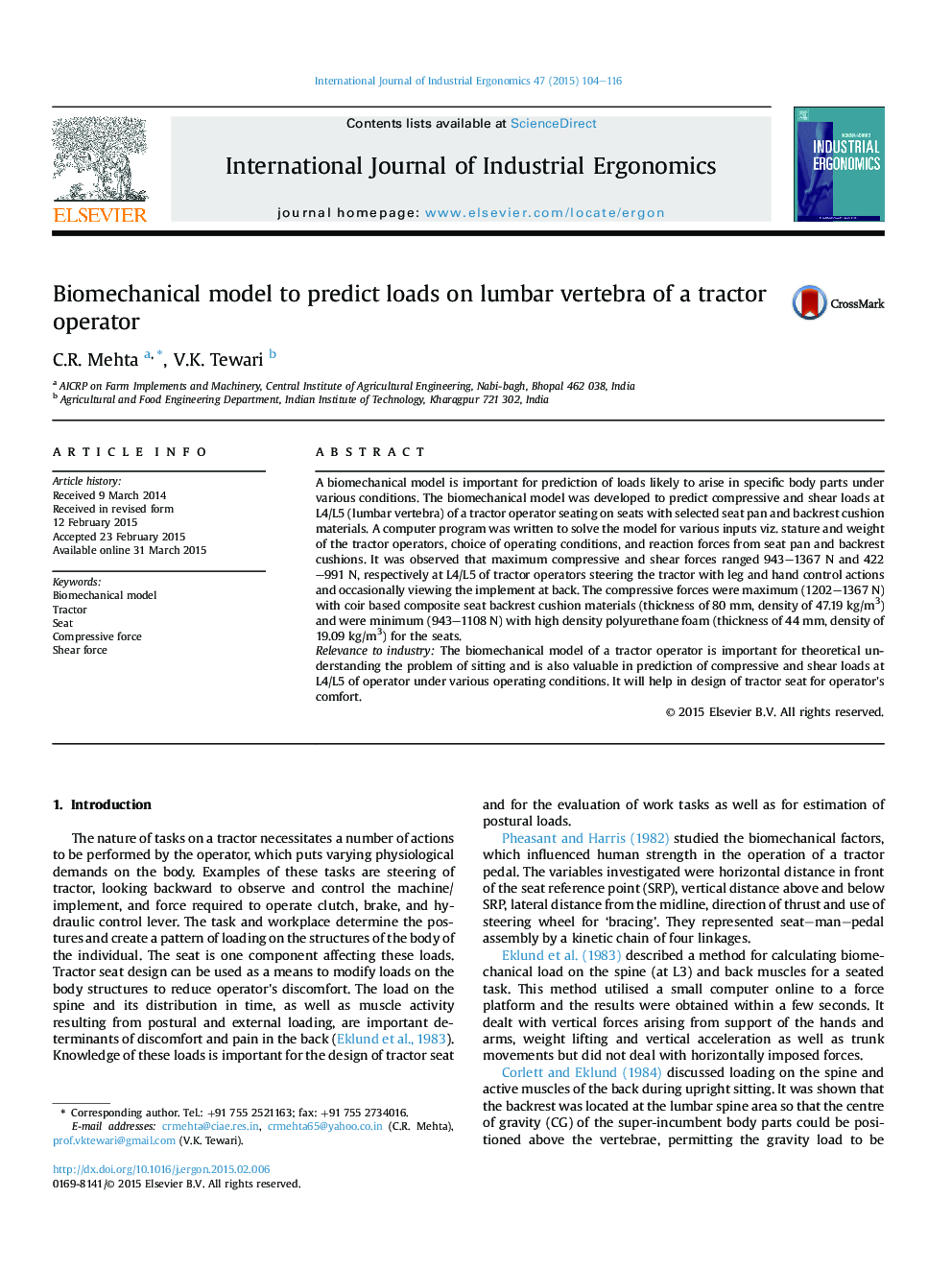| Article ID | Journal | Published Year | Pages | File Type |
|---|---|---|---|---|
| 1095976 | International Journal of Industrial Ergonomics | 2015 | 13 Pages |
•Biomechanical model to predict loads at L4/L5 vertebra of tractor drivers.•Inputs were stature and weight of operators, operating conditions and reaction forces.•Maximum compressive and shear forces ranged 943–1367 N and 422–991 N, respectively.
A biomechanical model is important for prediction of loads likely to arise in specific body parts under various conditions. The biomechanical model was developed to predict compressive and shear loads at L4/L5 (lumbar vertebra) of a tractor operator seating on seats with selected seat pan and backrest cushion materials. A computer program was written to solve the model for various inputs viz. stature and weight of the tractor operators, choice of operating conditions, and reaction forces from seat pan and backrest cushions. It was observed that maximum compressive and shear forces ranged 943–1367 N and 422–991 N, respectively at L4/L5 of tractor operators steering the tractor with leg and hand control actions and occasionally viewing the implement at back. The compressive forces were maximum (1202–1367 N) with coir based composite seat backrest cushion materials (thickness of 80 mm, density of 47.19 kg/m3) and were minimum (943–1108 N) with high density polyurethane foam (thickness of 44 mm, density of 19.09 kg/m3) for the seats.Relevance to industryThe biomechanical model of a tractor operator is important for theoretical understanding the problem of sitting and is also valuable in prediction of compressive and shear loads at L4/L5 of operator under various operating conditions. It will help in design of tractor seat for operator's comfort.
